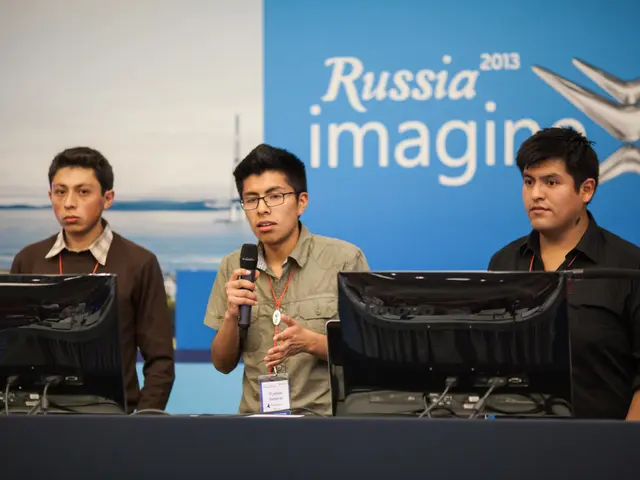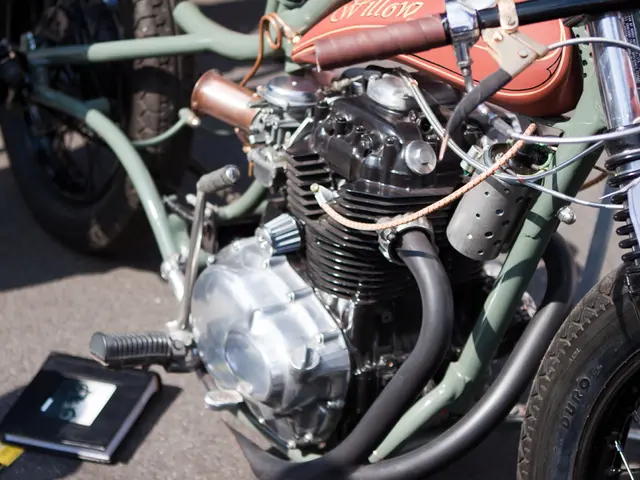Electric vehicle (EV) manufacturer BYD is set to unveil a high-performance hypercar boasting close to 3,000 horsepower, marking it as the world's most potent EV.
BYD's U9 Hypercar Variant Unveiled: A Game-Changer in Electric Vehicle Technology
BYD, the Chinese electric vehicle manufacturer, has unveiled a new hypercar variant of its popular U9 electric supercar. The upcoming model promises to be a game-changer in the electric vehicle industry, boasting an unprecedented power output and cutting-edge technology.
The heart of this new hypercar variant, often referred to as the Track Edition, is a quad-motor system. Each motor is rated at 555 kW, combining for a total output of approximately 2,220 kW. This significantly surpasses the current U9’s 960 kW powertrain and places it among the most powerful production electric vehicles worldwide.
The new motors, announced as part of BYD's 1,000 kW charging announcement in March this year, are capable of spinning over 30,000 rpm, the highest in any production vehicle to date. This enables enhanced power density and performance.
The U9 hypercar variant is expected to have a top speed of around 350 km/h (217 mph), slightly below the speed test of the original U9 variant but with drastically increased power and acceleration potential. More details on the upcoming model are likely to be revealed before the end of the year.
In terms of dimensions, the U9 hypercar measures approximately 4,966 mm in length, 2,029 mm in width, and 1,311 mm in height, with a wheelbase of 2,900 mm. The kerb weight is estimated to be roughly 2,480–2,630 kg.
The hypercar's aerodynamics have been optimised with features such as a carbon-fibre roof, a large fixed carbon-fibre rear wing, a rear diffuser with adjustable blades, and optional aerodynamic packages like front splitters and an electric rear wing for improved high-speed stability. It is also equipped with 20-inch wheels and 325/30 or 325/35 R20 performance tyres designed for track-level grip and handling.
BYD's Yangwang U9 supercar has been a halo car for the company and has gained significant media attention. The hypercar variant is currently undergoing testing at the Nürburgring racetrack. A video of the updated U9 at Nürburgring has been posted by Drivegreen on X.
The U9 is equipped with an 80 kWh BYD blade battery pack capable of delivering up to 450 km of CLTC range. The U9 hypercar variant supports the company's latest 800-volt architecture with dual-input fast-charging capability, allowing it to charge from 30-80% in just 10 minutes.
With a power output of 2,978 HP or 2,200 kW, the U9 hypercar variant is expected to be the most powerful production electric car globally at launch. It rests on BYD’s advancement in motor and battery technologies, aligning with their 1,000 kW charging announcement earlier in 2025.
Riz Akhtar, the founder of carloop based in Melbourne, has expressed his enthusiasm for the U9 hypercar. As a mechanical engineer and a passionate advocate for electric vehicles, Akhtar is eagerly awaiting more details about the upcoming model.
In the real world, the U9's range on the WLTP cycle is likely to be closer to 370 km.
The U9 hypercar variant is set to eclipse other high-power electric hypercars like the Rimac Nevera and Lotus Evija by a substantial margin in peak power output. It represents a significant step forward in electric vehicle technology and promises to redefine the boundaries of what is possible in the realm of electric performance cars.
Read also:
- Tesla is reportedly staying away from the solid-state battery trend, as suggested by indications from CATL and Panasonic.
- California links 100,000 home storage batteries through its Virtual Power Plant program.
- Financial regulatory body examines potential instability of Decentralized Finance (DeFi) and cryptocurrencies as they approach a significant growth milestone, known as "critical mass".
- Online Advertising Consent Framework Faced with Significant Ramifications According to Belgian Data Protection Authority's Decision






